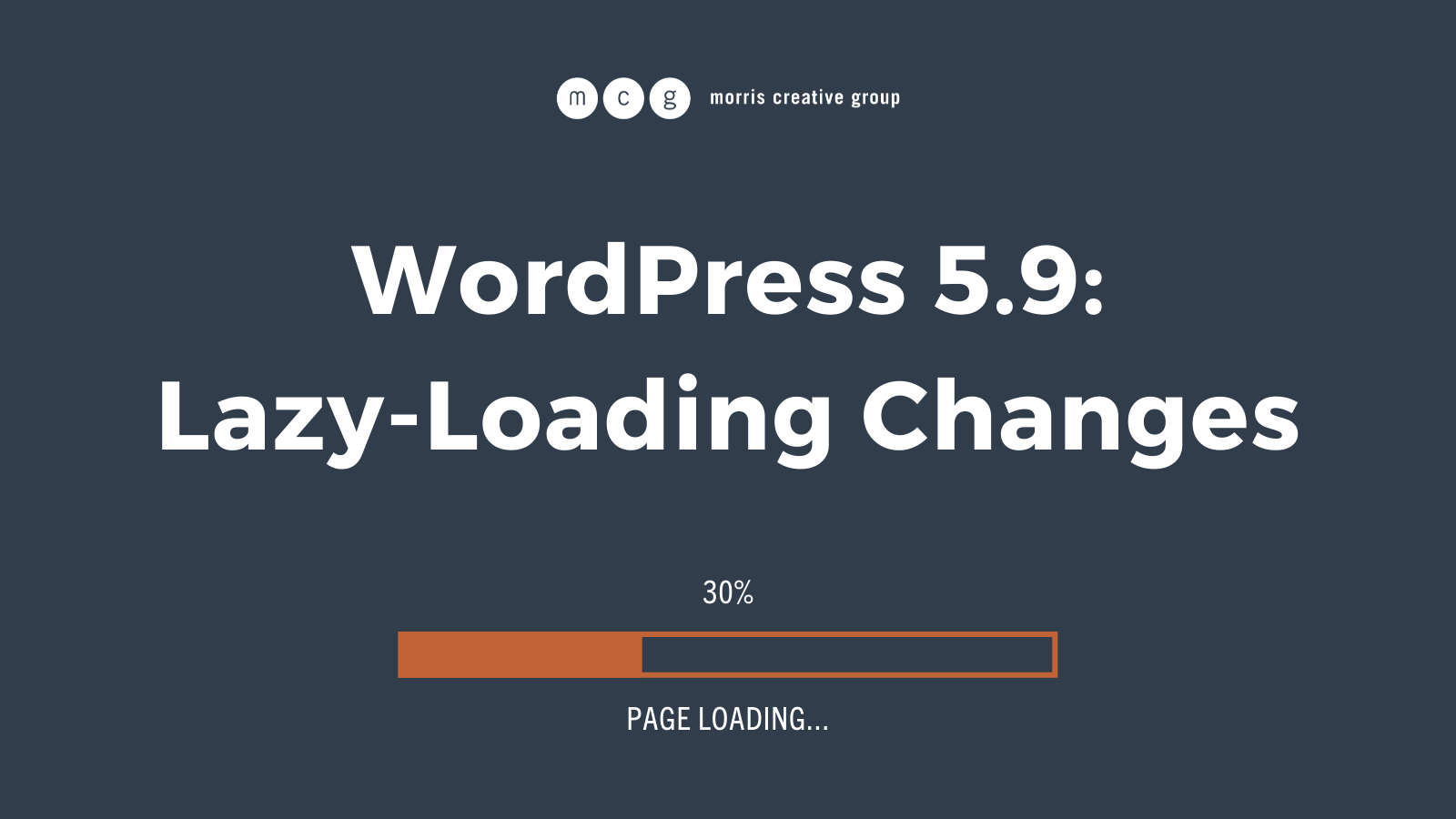WordPress 5.9: Lazy-Loading Changes
Website performance is just one of the many ingredients that come together to make a great SEO recipe, which is why we recommend putting just as much thought into how your site performs as you do the content you place on it.
One of the factors that can make your site perform poorly is the file size of your images. If your image files take a long time to download, your site will take a long time to load, too. Thankfully, there are ways that you can optimize your images to ensure that they aren’t clogging up your site speed and hurting your SEO. These ways include correctly sizing your images, choosing high-efficiency image formats (JPEG, AVIF, WEBP, etc.), and, finally, lazy loading.
Lazy loading is a powerful technique used in websites all over the world. When applied to an image, it ensures that it will not begin downloading to your site until it is visible. For example, you wouldn’t want a large image at the bottom of your page to load immediately if no one sees it until they’ve finished reading your blog post! That’s just leaving performance on the table. It is for this reason that lazy loading is such a powerful tool for web development, and why you should include it in your SEO strategy.
Lazy loading isn’t a silver bullet, though. It certainly has limitations. If you configure an image with the lazy loading attribute and it’s at the top of your page, often referred to as “above the fold,” then the image will have to wait to load in. If this happens, it could increase your Longest Contentful Paint (LCP) and lower your overall site speed, decreasing not only your SEO but your user experience, as well.
Thankfully, WordPress has started implementing solutions to resolve this issue. In recent dev-notes by WordPress Developer Felix Arntz, Arntz mentions that WordPress version 5.9 will include code to help combat this issue. The new development will ensure that the first image of any webpage will ignore a lazy loading attribute. Developers everywhere are rejoicing. On a serious note, though, the reasoning behind this change is that the first image on a given page is nearly invariably found within the initial viewport. From this information, we can estimate that the large majority of websites could gain a discernible performance enhancement from this upgrade. In WordPress’s own investigation, they determined that some sites could see up to a 30% load-speed enhancement from this update. We are eager to see how this will translate to the majority of websites on the platform.
We understand that web development and content creation is not everyone’s strong suit – which is why we made them ours. Contact the MCG team to learn more about our unique solutions and to schedule a free, no-obligation consultation.









